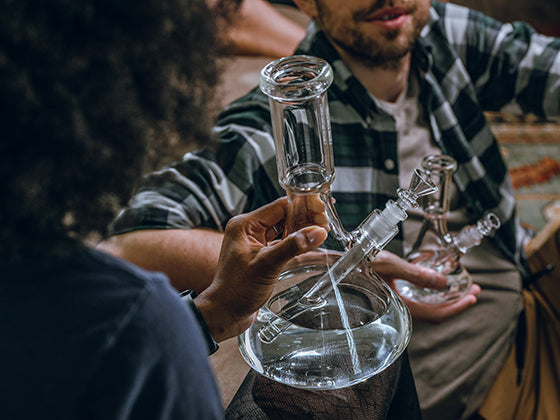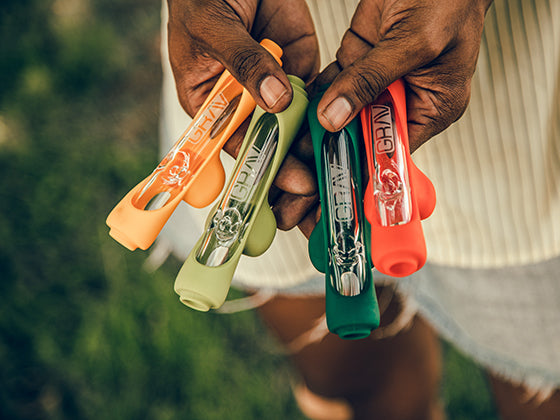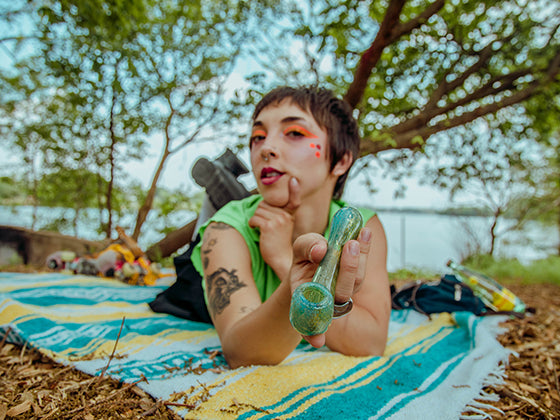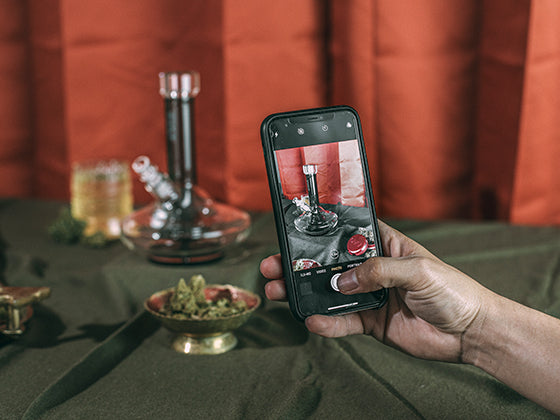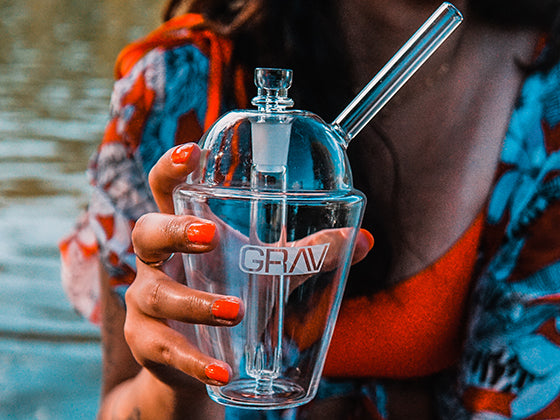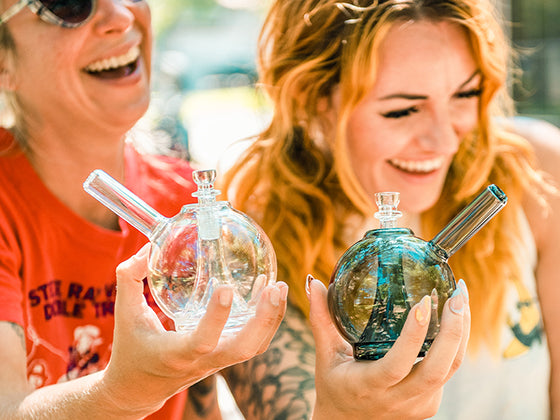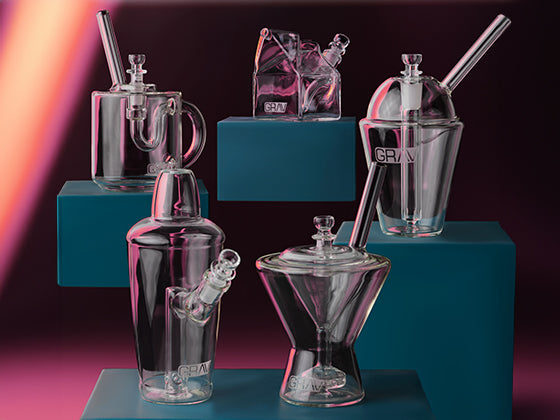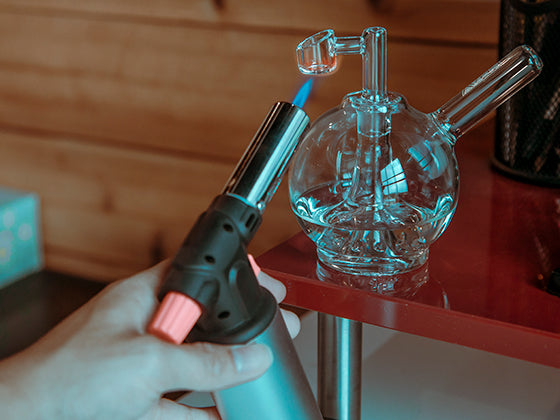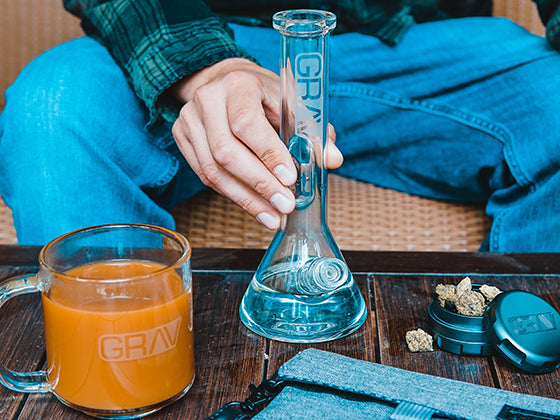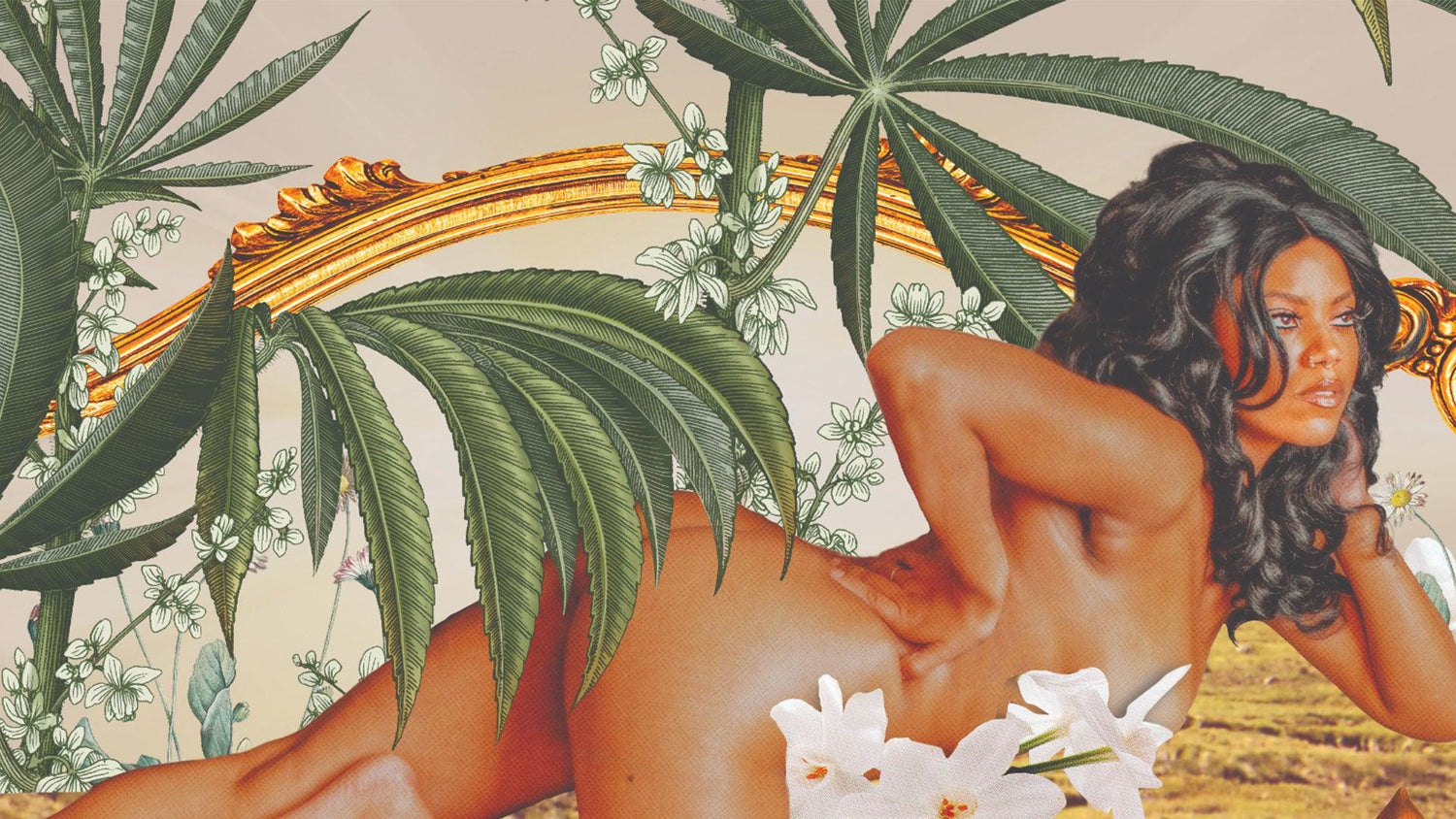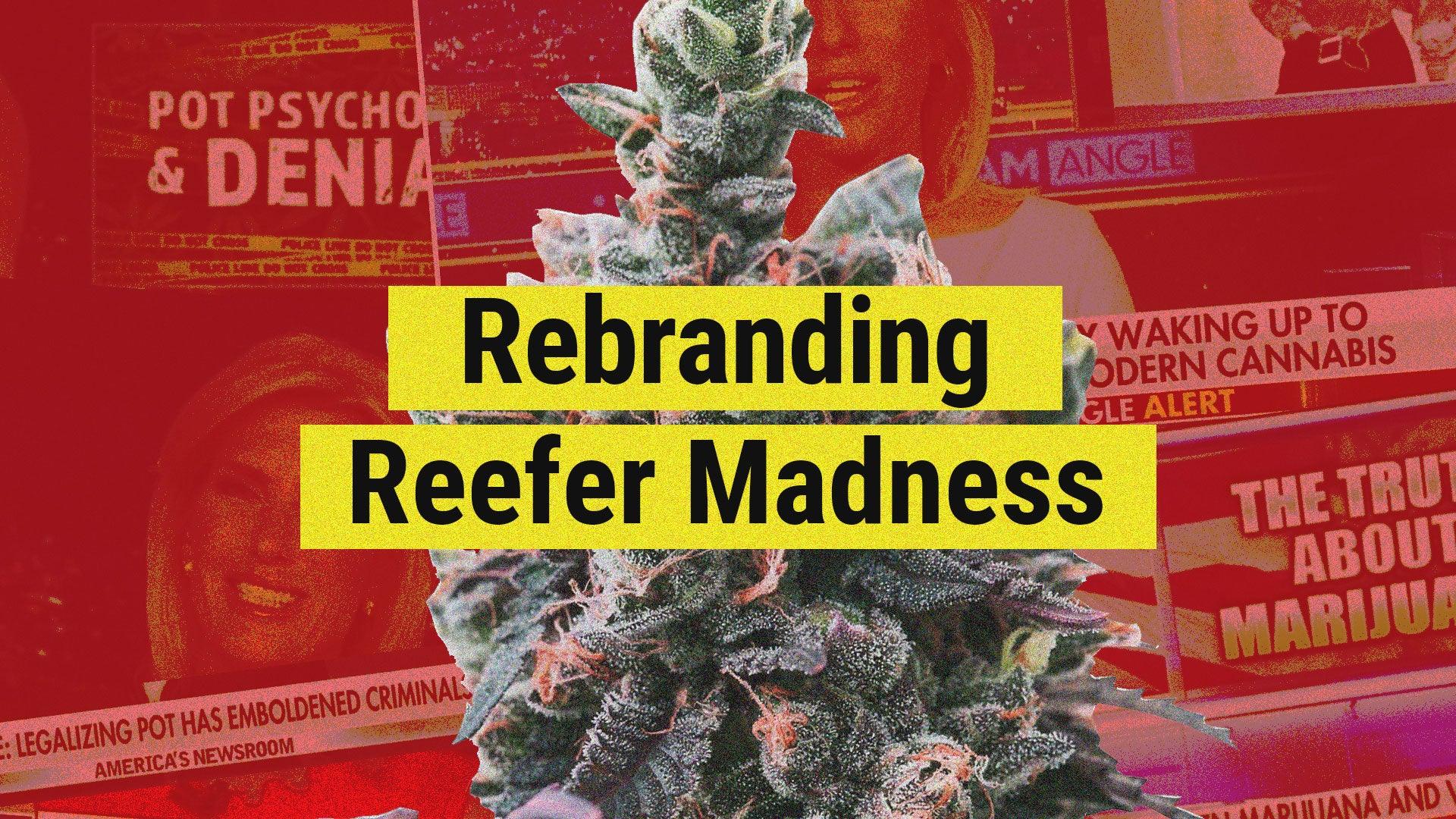Overcoming Oppression Against Women and Cannabis
Sometimes we commission art at GRAV® because we like to work with artists who make dope shit.
And other times, we commission art because we like to work with artists who make dope shit and because we want to make a statement.
The newest release in our Artist Series is definitely the latter.
The Women Are Not Okay
The devastating Roe v. Wade reversal earlier this year was the shit cherry on top of a lifetime of trash messaging. We’re told a woman’s worth is in how she looks…but she has to dress a certain way in order to earn respect…and by the way, her normal bodily functions are “gross”...but also she owes the world the reproduction that those functions allow…but she can’t have the support necessary to raise her family…but if she opts out of child-rearing she’s selfish…and don’t you DARE show a nipple, you harlot.
Dial that frustration up further for women of color. And tick it up again for trans women and nonbinary people who don’t fit into an easily defined box.
Women’s bodies are policed and censored in reality and online, with social media platforms flagging posts of the female form, menstruation, and pubic hair. And if you’re in a larger body, your images are even more likely to be censored.
The control expands beyond appearance and into behavior—even in the cannabis space. Just 22% of cannabis executives were women in 2021, and women are made to feel like outsiders at dispensaries. Mothers guzzling bottles of wine is seen as a relatable joke (see baby onesies with “cute” phrases like “I’m the reason mommy drinks”), yet mothers who smoke are treated as unfit parents.
It goes on and on and on.
From Frustration to Creation
In our work in the cannabis space, the same mixed messaging and censorship apply. GRAV® Social Media Strategist, Safiatou Soumana explains, “We have gotten so many infractions from Instagram [for our cannabis content]. And the rules are applied inconsistently. Some brands post a ton of flower and have a blue checkmark. And others [get bans]. It sucks even more if you’re an influencer in this space.”
To us, there is an innate connection between the policing of women’s bodies and the policing of cannabis in its natural state—a plant gifted to us by nature, but restricted at best and outlawed at worst. And for a Texas-based company, one of the most restrictive on both fronts, it’s important to us to push back on the culture of control that tells us that there is something inherently wrong with the female form and with the female flower.
So the women of GRAV® wanted to create a piece of art that advocates the autonomy of the individual, to be free in their bodies and free with what they put in their bodies. Your uterus is yours. Your breasts are yours. Your lungs are yours. And we think you should be empowered to say what will and will not happen to them.
A Celebration of the Censored
So that’s where our heads and hearts were at. But who to create this delightful bit of malicious compliance—an art piece that could “follow the rules” and rebel against them all at once?
It had to be Savina Monet, the Queen of Cannabis Collages. With her bold and unique art in the cannabis space, this Portland-based creator was the only name on the shortlist.

Collage Artist Savina Monet. Photo by Bryan Asker Dalton.
“We wanted to stick to a pretty restricted color palette to bring attention to the body itself, the subject of the entire poster,” Savina explains. “So I wanted to use imagery that was inherently feminine but also wasn't too bold, too saturated. So the ornate frame in the background, the flowers—all those shapes and visuals are just cues toward the femininity of the plant itself and of the model.”

Savina’s art piece celebrates these censored subjects by staying just inside the bounds of what’s “allowed.” The fan leaves include the mild serration of cannabis but are depicted in nine-leaf clusters instead of the five or seven that are usually seen in renderings of the plant.
The flowering bud colas are covered in stylized white flowers…just a bit cleaner than the normal trichome-rich buds in real life.
“Sometimes you can get away with buds and flower, and sometimes you can’t,” says Savina. “It’s inconsistent. I wanted to showcase the flower in its natural state, so I used illustrations that go just far enough.”
And as for the model (the gorgeous Austin-based model Javdee), anything objectionable is carefully obscured. No nipple here—it’s just hidden by a feminine white flower. Not too much curve of the buttocks—a convenient leaf rests delicately on top.
For the model imagery, GRAV® held a photo shoot to create something completely original for Savina. “We wanted to make sure that we showcase a black or brown body because we know that a lot of these laws impact black and brown women,” Safia explains. “So we wanted to really center who was the most affected as we did this piece.”
In the end, this project has been the creation of a team of incredible women. It was conceptualized by Safiatou Soumana and Chelsea Patillo, Creative Director at GRAV®. It was created by Savina, with imagery of model Javdee shot by Caroline Quant, graphic designer and photographer.
In such a male-dominated space, it’s been a pleasure to center a primarily female perspective.
More About The Queen of Cannabis Collages
Savina’s foray into collage art was partially an attempt to create a better life for herself, and partially to deal with what she saw as her own artistic limitation.
“I got started with collage because I never thought I could draw,” Savina says. “Collages were a quick way to get an idea or mood out of my head. I was working low-wage jobs and decided I wanted to do something better, actually start a career. So I started taking Coursera classes and watching YouTube videos to learn the basics of graphic design, composition, and color balance. After that, I just felt so free to play.”
With the basics under her belt, Savina started integrating cannabis as a way to start a conversation around the stigmatization of cannabis itself. “When I moved here to Oregon, it was just the beginning of the adult-use market, and there was still a lot of stigma around people that use it.”
Stigma? Even in the liberal utopia that is Portland?
In Savina’s experience, even industry leaders are not as welcoming of the plant as one would expect.
“All the cannabis events here are usually at breweries,” Savina explains. “They’re more about alcohol than about smoking. I remember one time I was at a cannabis networking event. Everyone was drinking, and I wanted to light up. Everyone looked at me like, ‘What the hell are you doing?’ Cannabis is still weird. We’re in the era of stigma 2.0 where the odor of weed is a big deal.”
Why is that?
“A lot of people in the industry may not have grown up with the culture, or smoked weed at all. People come in from real estate or health care. They become CEOs of these businesses, but they also look down at those who still use the plant holistically because it calls back to the stoner vibe. I don’t want us to completely cleanse the culture of its roots. Extracts and edibles are great, but they’re also a step away from the plant itself.”
It’s another form of censorship, of adulteration. It seems to say that cannabis shouldn’t be seen or smelled. It must be wrapped up in a neon green apple-flavored gummy to have a place in a civilized society. And we like edibles! But we—like Savina—want to preserve and promote the natural state of the plant that we love.
The Cannabis Workers Coalition
Outside of her artistic work, Savina is also co-founder of the Cannabis Workers Coalition. At the height of the COVID-19 pandemic, too many people she knew who worked in cannabis were getting fired for taking sick time.

Cannabis Workers Coalition co-founders Savina Monet and Jessica Ortiz. Photo by The Lifted Lens.
What started as an education hub to help people understand their rights turned into a more organized labor support group. It’s a safe place for people to report unsafe working conditions on the job. They can also find support after mistreatment due to their work in cannabis, due to the persistent federal ban. For example, cannabis workers can be rejected for loans, or their bank accounts can be closed with no warning.
Beyond support and validation, the group’s volunteers also connect workers with legal resources. They have relationships with the Occupational Safety and Health Administration (OSHA) and the Bureau of Labor and Industry.
While the group mostly works within the Oregon community, they will talk to workers anywhere and try to connect them to local resources. Follow them on Instagram to keep up with their work and educational content.
Order the Print
It all comes back to the art. This 24” x 18” print is available for a limited time, only at grav.com.
Get the print here.
And see more of Savina’s art here (including her recent back cover for the Women’s Issue of High Times):
Savina's Instagram
Savina's Website
Proceeds support the artist and Fund Texas Choice.

